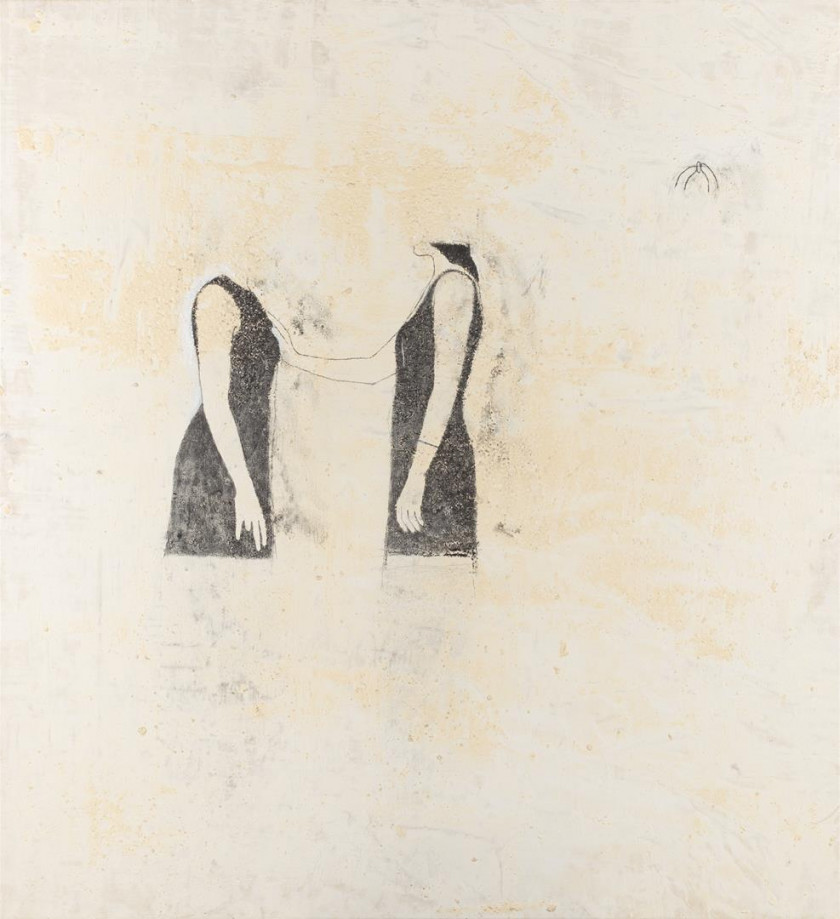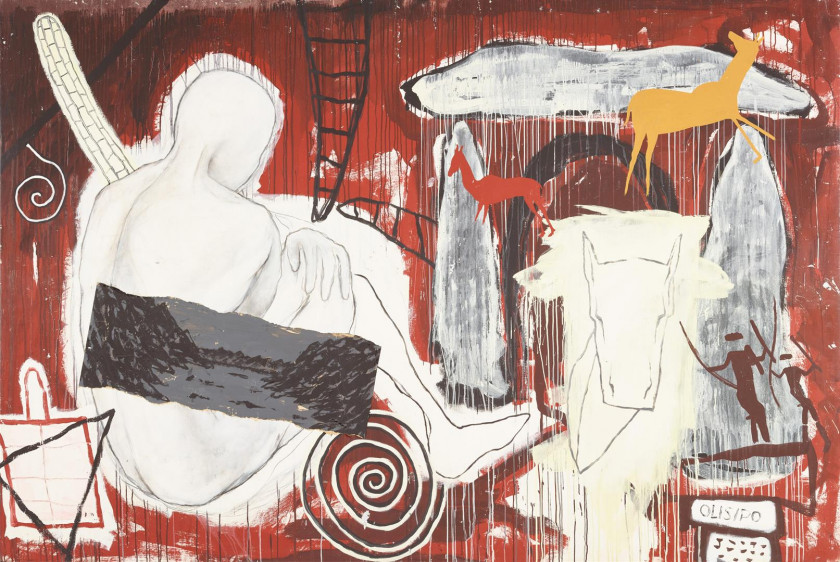Num Estilo Conforme a Etiqueta [In a Style Conforming to Etiquette]
painting


1997
Polyvinyl acetate, pigment and graphite on raw cotton canvas
199 x 181 x 2,7 cm
In 1997, Julião Sarmento represented Portugal at the 47th Venice Biennale with the exhibition Casanova, of which this painting was a part. Presented at the Palazzo Vendramin ai Carmini, the exhibition dedicated to the Venetian libertine occupies a particularly important place in Sarmento's career, constituting the continuation of a series of works that stood in dialogue with figures of libertine imaginary such as Lord Byron's fictional D. Juan, Sacher Masoch, or the Marquis de Sade – two years earlier, Sarmento had done illustrations for Justine et Juliette – and this emphasis would continue with works on the erotic correspondence between James Joyce and Nora Barnacle.
Sarmento’s interest in Casanova was evident from a very early age (there are two paintings from 1989 in which the artist included a self-portrait in silhouette that mimics a famous portrait of Casanova), and is linked to the importance of memory, present throughout his career. Unlike the great figures of the 18th century libertine imaginary, such as the Don Giovanni created by Lorenzo da Ponte, who has a servant, Leporello, who writes down his conquests, the figure of the great 18th century chronicler is constructed from his memories, narrated in Histoire de ma Vie.
This biographical, fictional and mnemonic construction is a central feature of Julião Sarmento's work, which systematically used recurring images (almost visual signs, such as the hand with amputated fingers, images of plants or dubious fragments of bodies), extending from the expressionist pictorial works of the 1980s through the white paintings to the late works.
In a style conforming to etiquette (quote from Histoire de ma Vie), two female figures, facing each other, are connected by a gesture, a touch of a hand on the chest. This thought-out and tested situation (there are 3 preparatory drawings from the same year for this painting) introduces the theme of the Doppelganger, also recurrent in Sarmento’s work (especially since the Laura and Alice series from 1994), as well as the gesture of two fingers holding a small element, also present in several drawings from the same period.
In the period of the so-called “white paintings”, the Casanova series therefore occupies a fundamental place of reference at a particularly productive moment in Julião Sarmento's oeuvre.
Delfim Sardo

